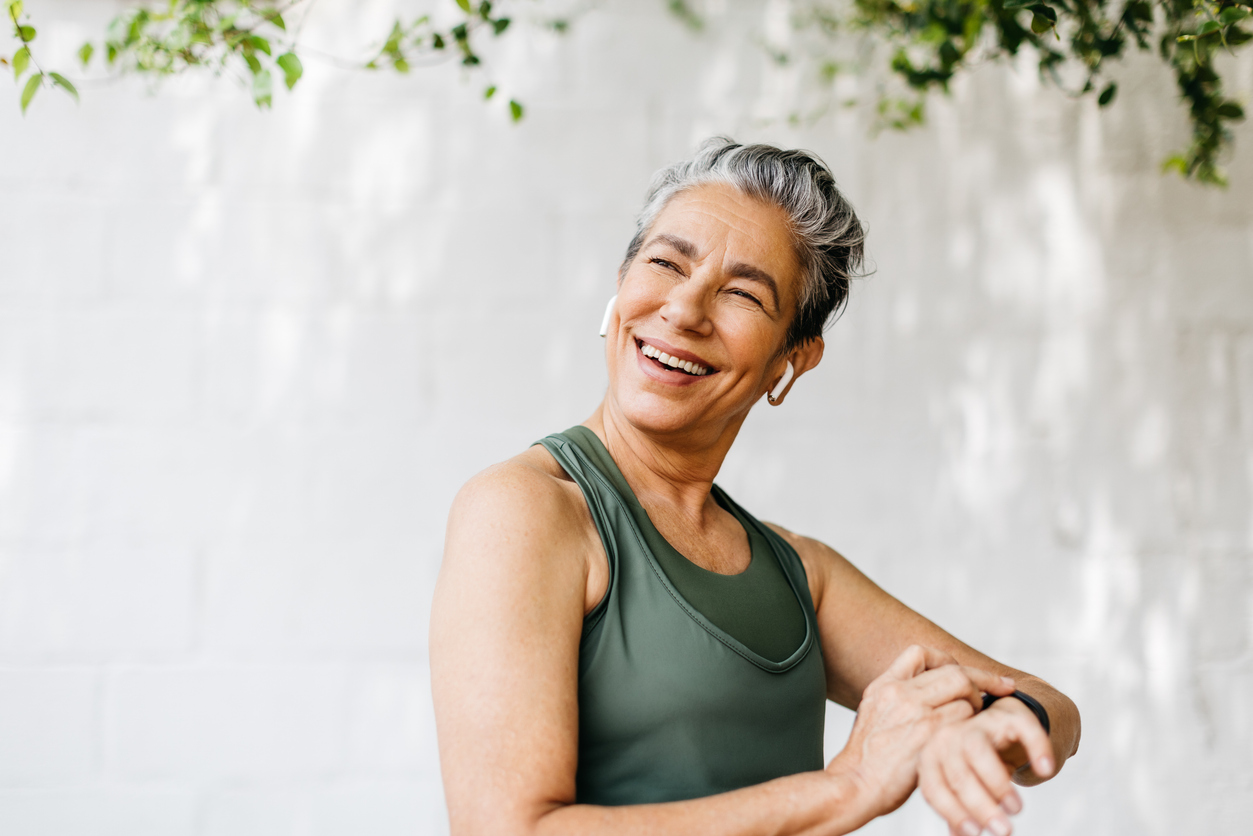
As we grow older, maintaining an active lifestyle becomes increasingly important for overall health and well-being. Regular physical activity can help you retain strength, improve mobility, and reduce the risk of chronic illnesses, while also enhancing mental health and fostering social connections. Staying active as you age doesn’t require intense workouts; it’s about finding enjoyable activities that keep you moving. Here’s why staying active is crucial as you age, along with practical tips to incorporate exercise into your daily life.
1. Physical Benefits of Staying Active
As we age, our bodies naturally undergo changes such as muscle loss, decreased bone density, and reduced flexibility. Regular physical activity can help mitigate these effects, improving overall physical health and functionality.
Key physical benefits include:
- Maintaining muscle mass and strength: Resistance training, such as lifting weights or using resistance bands, helps combat age-related muscle loss (sarcopenia).
- Improving bone health: Weight-bearing exercises, like walking and dancing, help maintain bone density and reduce the risk of osteoporosis.
- Enhancing cardiovascular health: Aerobic exercises, like swimming or brisk walking, improve heart health and lower the risk of conditions like hypertension and heart disease.
- Boosting flexibility and balance: Activities like yoga or tai chi enhance balance and coordination, reducing the risk of falls—a common concern among older adults.
Pro tip:
- Start with low-impact exercises and gradually increase intensity to suit your fitness level.
2. Mental Health Benefits
Staying active doesn’t just benefit the body; it’s also essential for maintaining mental health. Regular exercise releases endorphins, which can help combat stress, anxiety, and depression.
Mental health advantages:
- Improved mood: Physical activity boosts the production of serotonin and dopamine, chemicals that promote feelings of happiness and relaxation.
- Enhanced cognitive function: Activities like walking or cycling stimulate blood flow to the brain, which can improve memory, focus, and overall cognitive function.
- Reduced risk of dementia: Studies show that regular exercise may lower the risk of developing Alzheimer’s and other forms of dementia.
Pro tip:
- Incorporate activities that challenge both the body and mind, such as dance classes or martial arts, to enhance mental acuity.
3. Social Benefits
Maintaining an active lifestyle often involves group activities or exercise classes, which can foster social connections and combat loneliness—a common issue among older adults.
Social perks of staying active:
- Building community: Joining walking groups, fitness classes, or recreational sports teams allows you to meet like-minded individuals.
- Strengthening relationships: Engaging in activities with family or friends creates shared experiences and strengthens bonds.
- Boosting confidence: Achieving fitness milestones or learning new skills can enhance self-esteem and a sense of accomplishment.
Pro tip:
- Check your local community center or gym for group activities tailored to older adults.
4. Reducing the Risk of Chronic Illnesses
Physical activity plays a vital role in preventing and managing chronic conditions that become more prevalent with age, such as diabetes, arthritis, and cardiovascular disease.
How staying active helps:
- Diabetes management: Exercise improves insulin sensitivity and helps regulate blood sugar levels.
- Joint health: Low-impact exercises, like swimming or water aerobics, reduce joint stiffness and improve mobility in those with arthritis.
- Heart health: Regular aerobic activity strengthens the heart, reduces cholesterol levels, and lowers blood pressure.
Pro tip:
- Speak with your doctor before starting a new exercise regimen, especially if you have existing health conditions.
5. Weight Management
Metabolism naturally slows down with age, making it easier to gain weight. Staying active helps burn calories and maintain a healthy weight, reducing the risk of obesity-related illnesses.
Strategies for weight management:
- Combine exercise with healthy eating: A balanced diet rich in whole foods complements physical activity.
- Focus on strength training: Building muscle increases your resting metabolic rate, helping you burn more calories even at rest.
- Incorporate daily movement: Simple activities like gardening, housework, or walking the dog contribute to calorie burn.
Pro tip:
- Use a fitness tracker or app to monitor your activity and ensure you’re meeting daily movement goals.
6. Tips for Staying Active as You Age
Incorporating regular exercise into your routine doesn’t have to be daunting. Here are practical tips to help you stay active:
a. Choose Activities You Enjoy
Find activities that align with your interests, whether it’s dancing, hiking, yoga, or swimming. You’re more likely to stick with exercises that bring you joy.
b. Set Realistic Goals
Start with small, achievable goals to build consistency. For example, aim for a 10-minute walk each day and gradually increase the duration.
c. Make it a Habit
Schedule exercise into your daily routine. Treat it as an essential part of your day, like eating or sleeping.
d. Stay Flexible
Listen to your body and adjust your activities as needed. If a high-impact workout feels too strenuous, opt for a gentler alternative.
e. Stay Hydrated and Nourished
Drink plenty of water before, during, and after exercise, and fuel your body with nutritious meals to support your activity level.
f. Consult a Professional
Consider working with a fitness trainer or physical therapist who specializes in older adults to create a safe and effective exercise plan tailored to your needs.
7. Overcoming Barriers to Staying Active
While staying active has numerous benefits, older adults often face challenges such as physical limitations, lack of motivation, or fear of injury. Addressing these barriers can make it easier to maintain an active lifestyle.
Common barriers and solutions:
- Limited mobility: Focus on seated exercises or water-based activities that reduce strain on joints.
- Time constraints: Incorporate short bursts of activity throughout the day instead of committing to a single long session.
- Fear of injury: Start with low-impact exercises and gradually increase intensity under professional guidance.
Pro tip:
- Celebrate small victories to stay motivated and remind yourself of the benefits of staying active.
8. Embracing Technology to Stay Active
Technology offers innovative ways to stay active and engaged. From fitness apps to wearable devices, there are tools to suit every lifestyle.
Tech tools to explore:
- Fitness apps: Apps like FitOn or SilverSneakers GO offer workouts tailored to seniors.
- Virtual classes: Platforms like Zoom enable participation in online yoga, Pilates, or dance classes.
- Wearable trackers: Devices like Fitbit or Apple Watch monitor your activity, heart rate, and sleep patterns.
Pro tip:
- Use online reviews or recommendations to find tools that match your fitness goals and tech-savviness.
Staying active as you age is one of the best things you can do for your physical, mental, and emotional well-being. Whether it’s taking a daily walk, joining a fitness class, or practicing yoga, consistent movement enhances your quality of life and keeps you feeling vibrant. Remember, it’s never too late to start! With the right mindset and a personalized approach, you can enjoy the benefits of an active lifestyle at any age.







